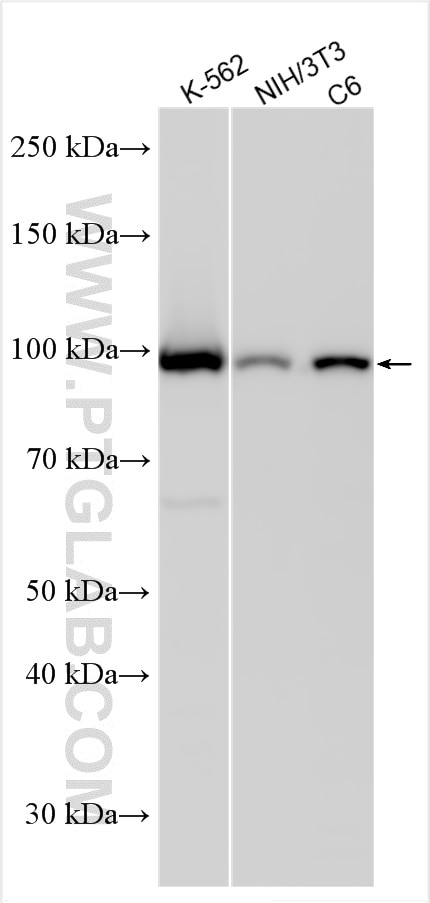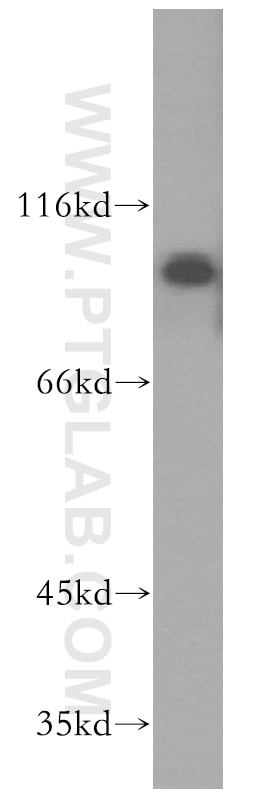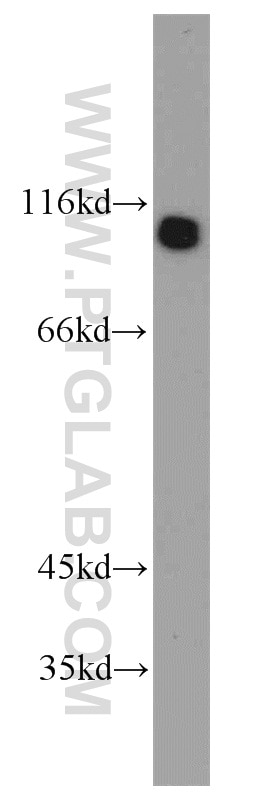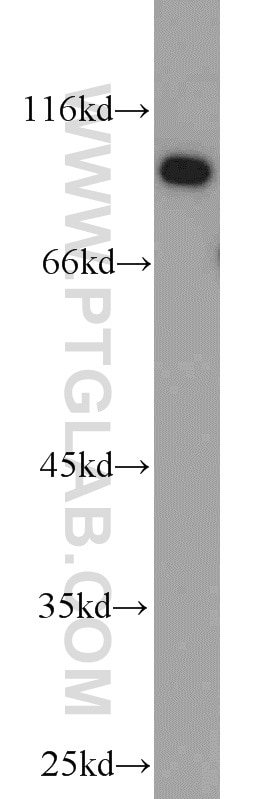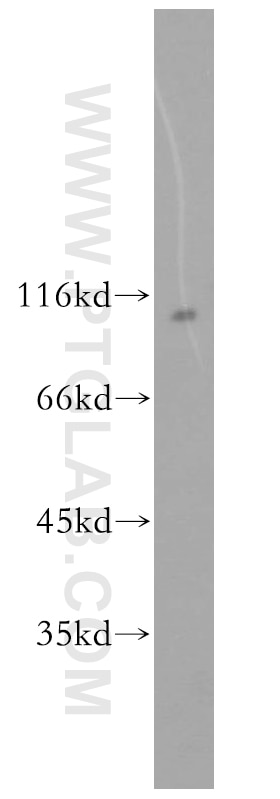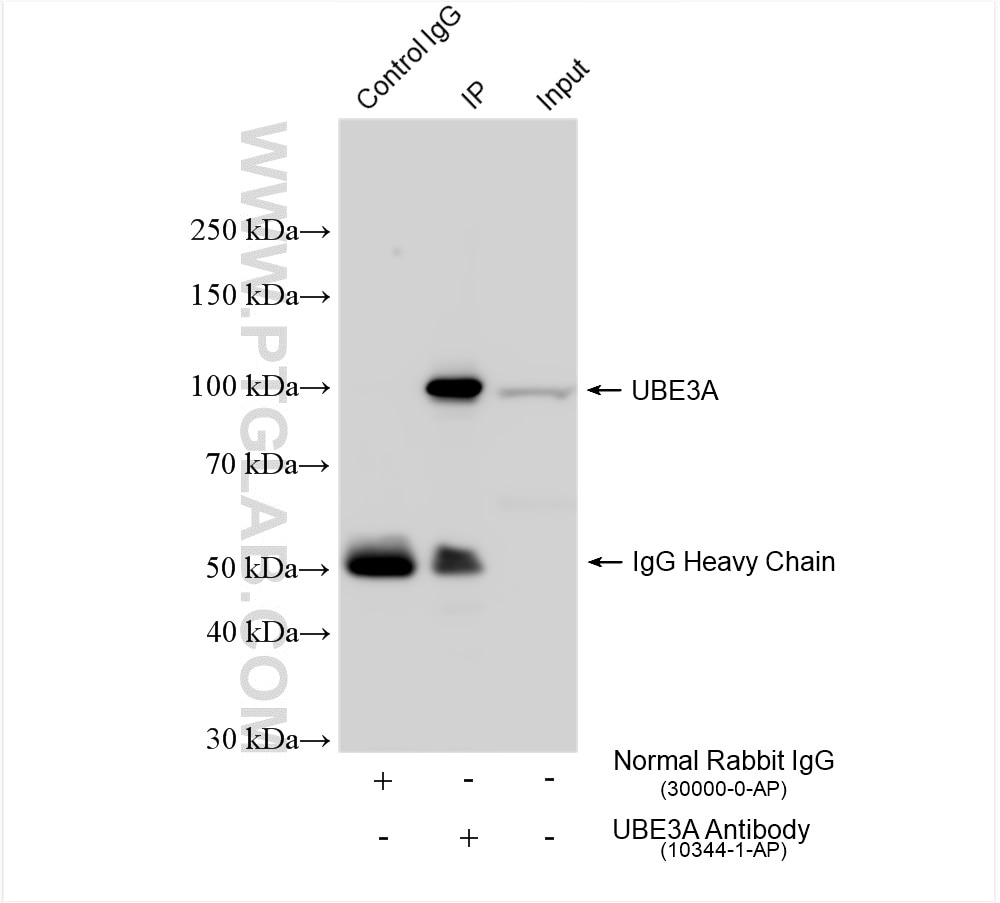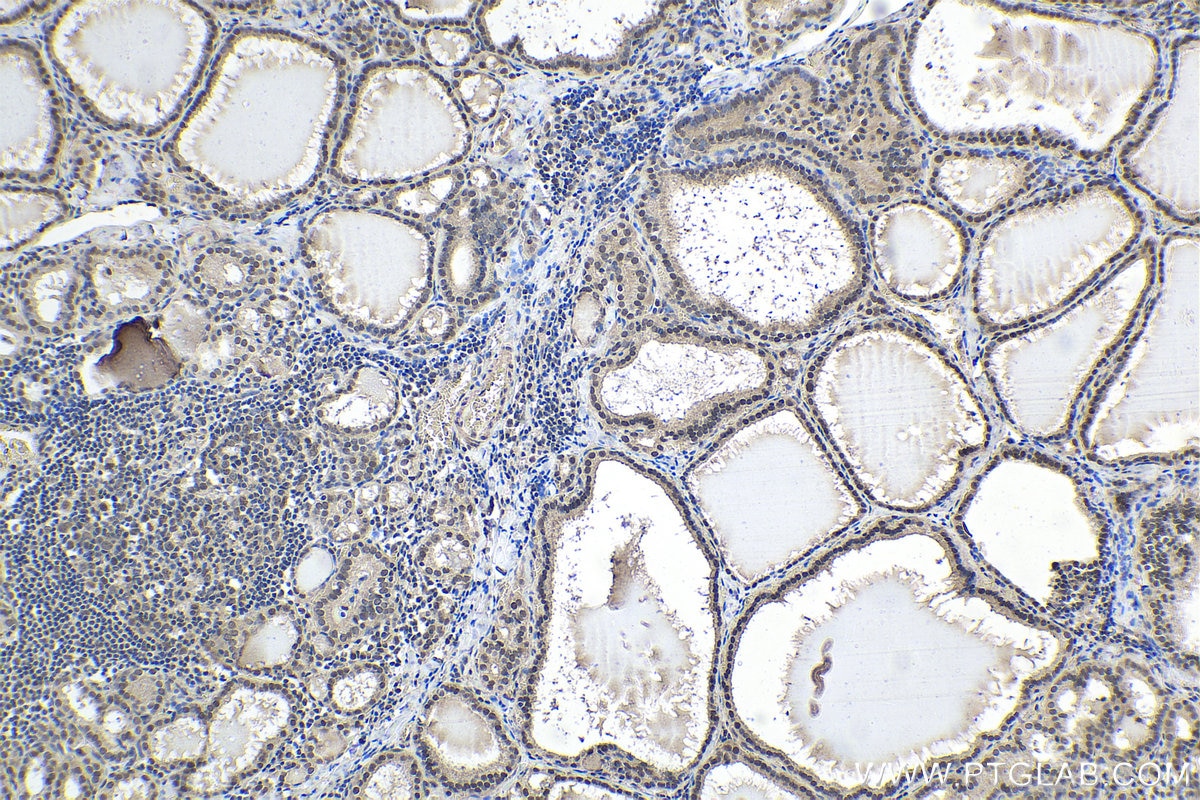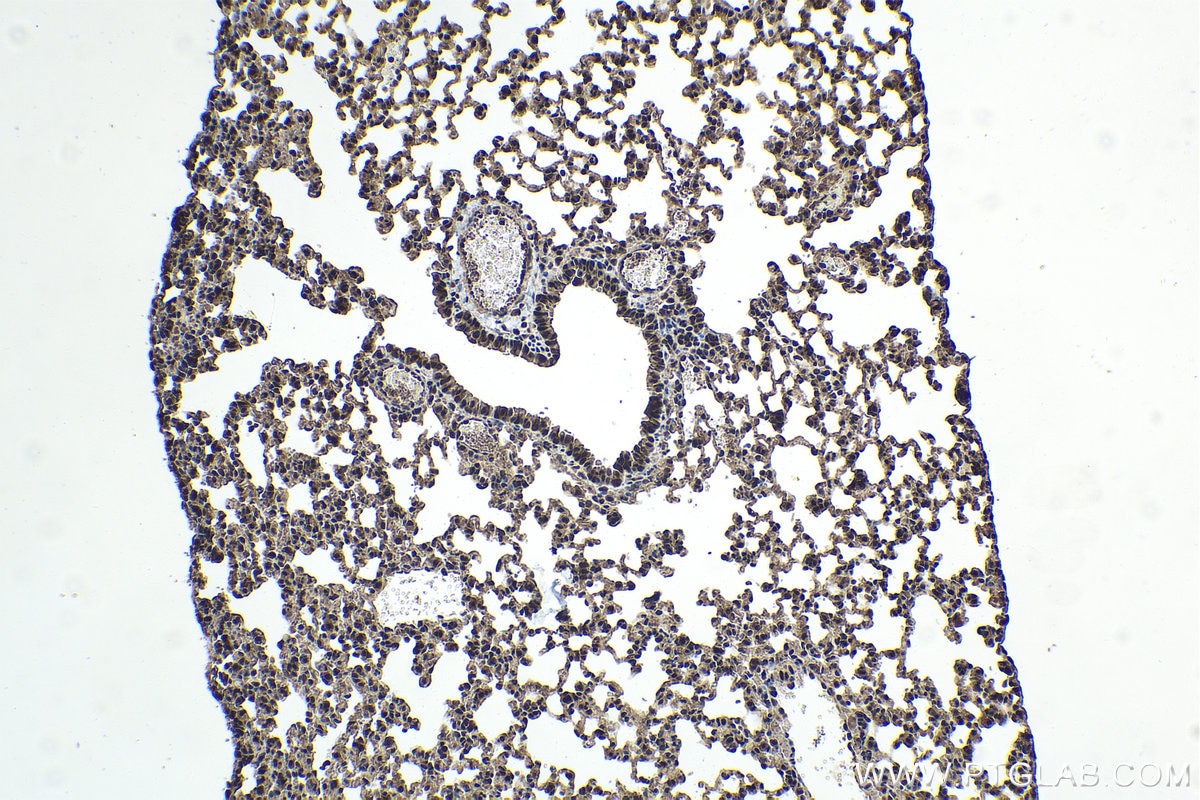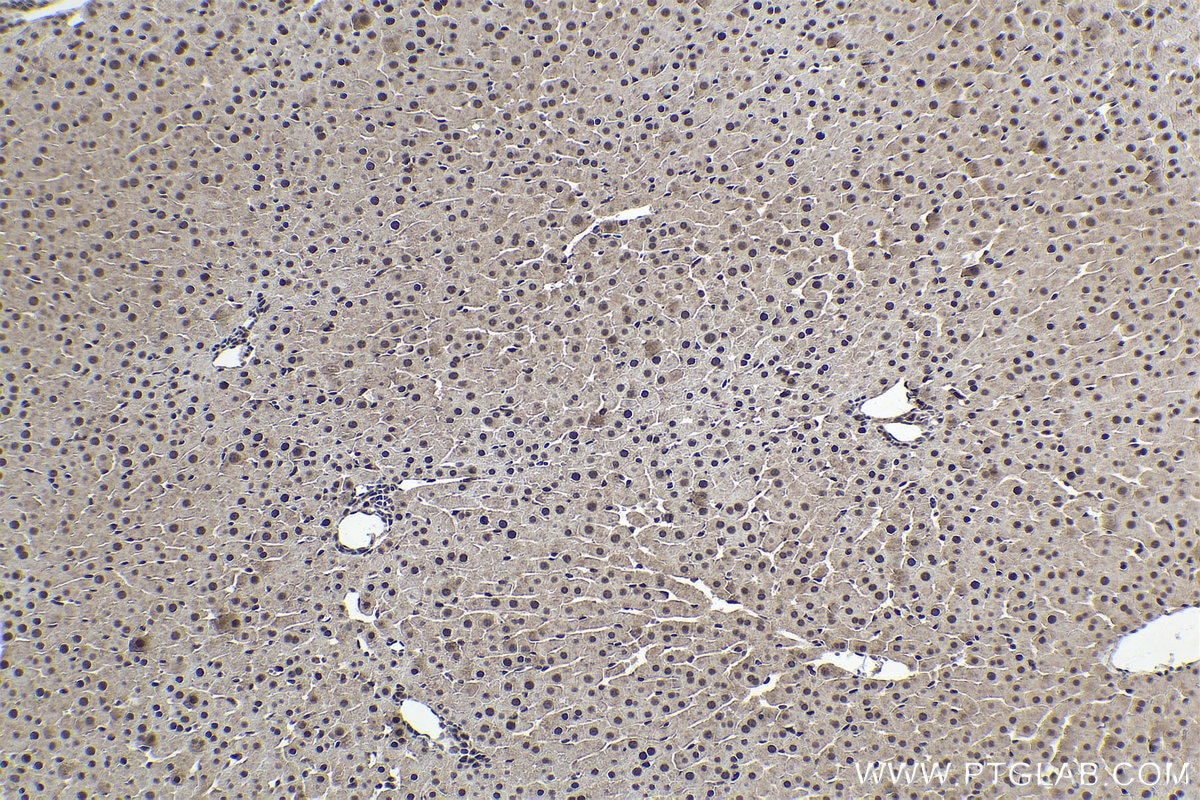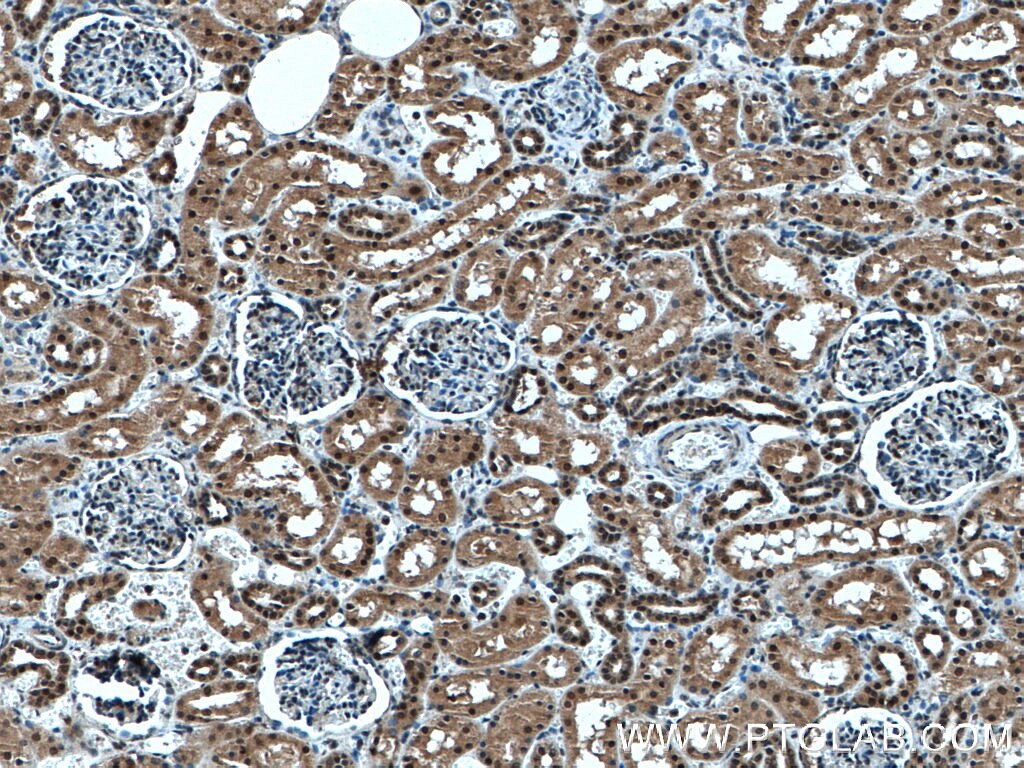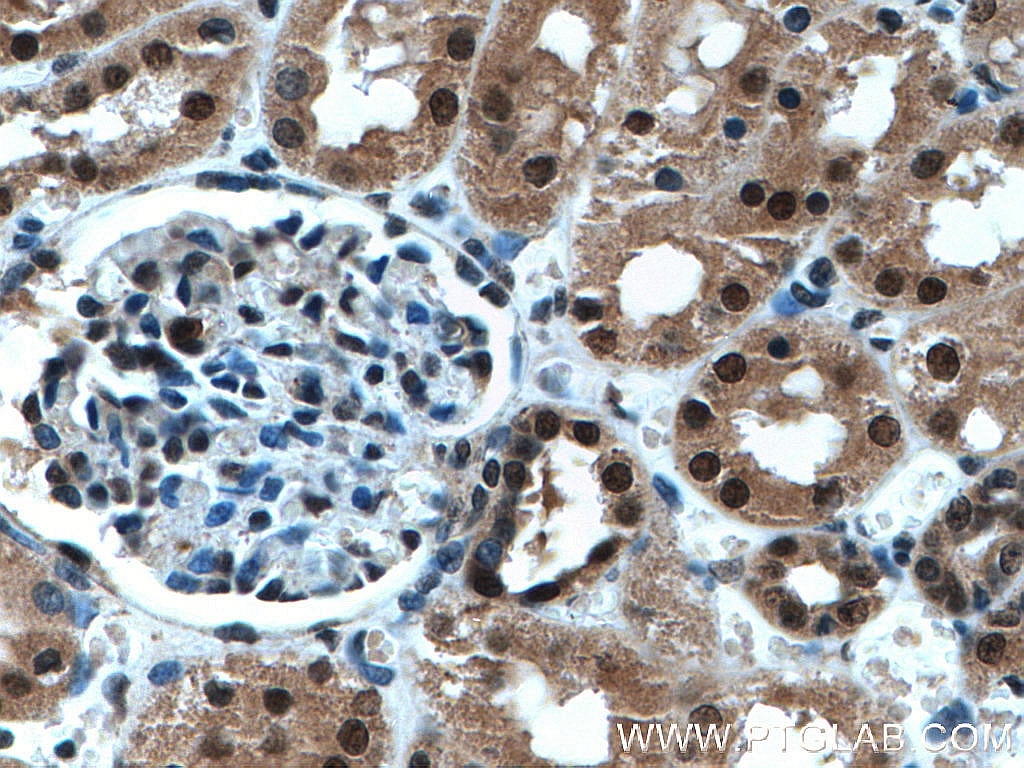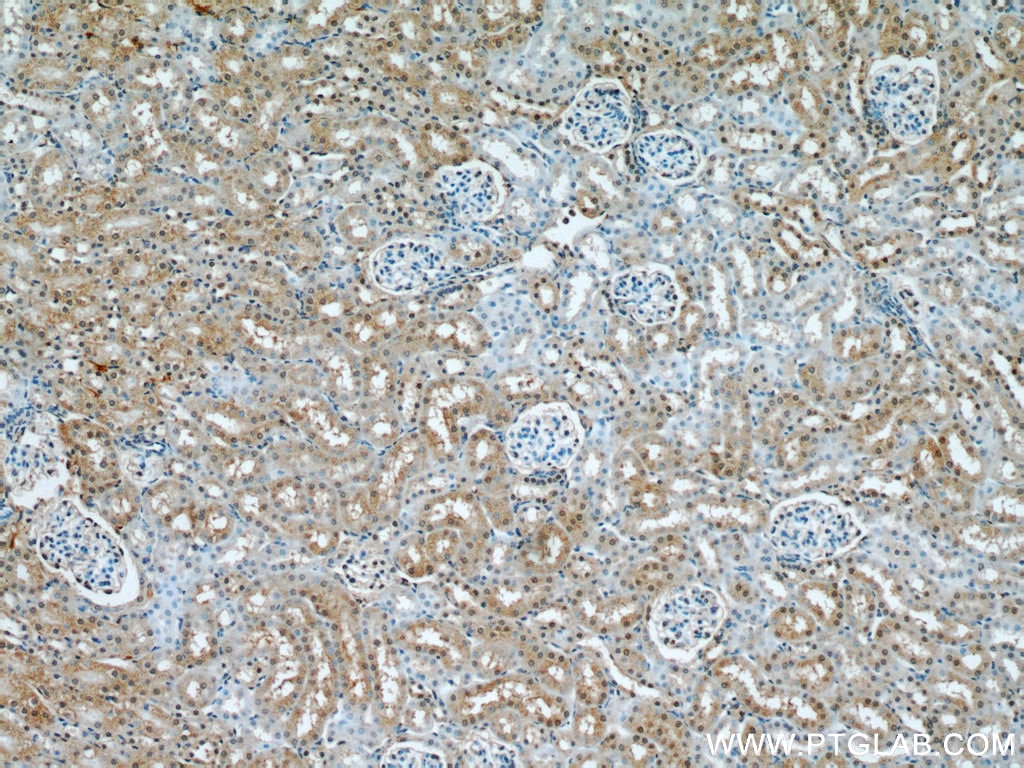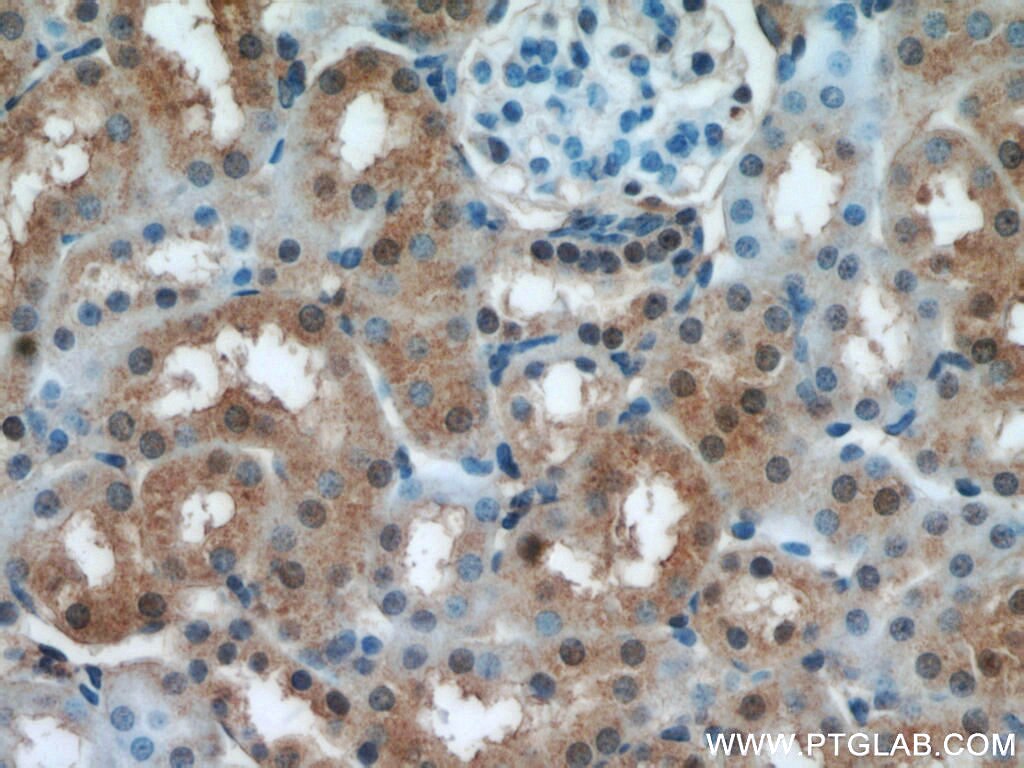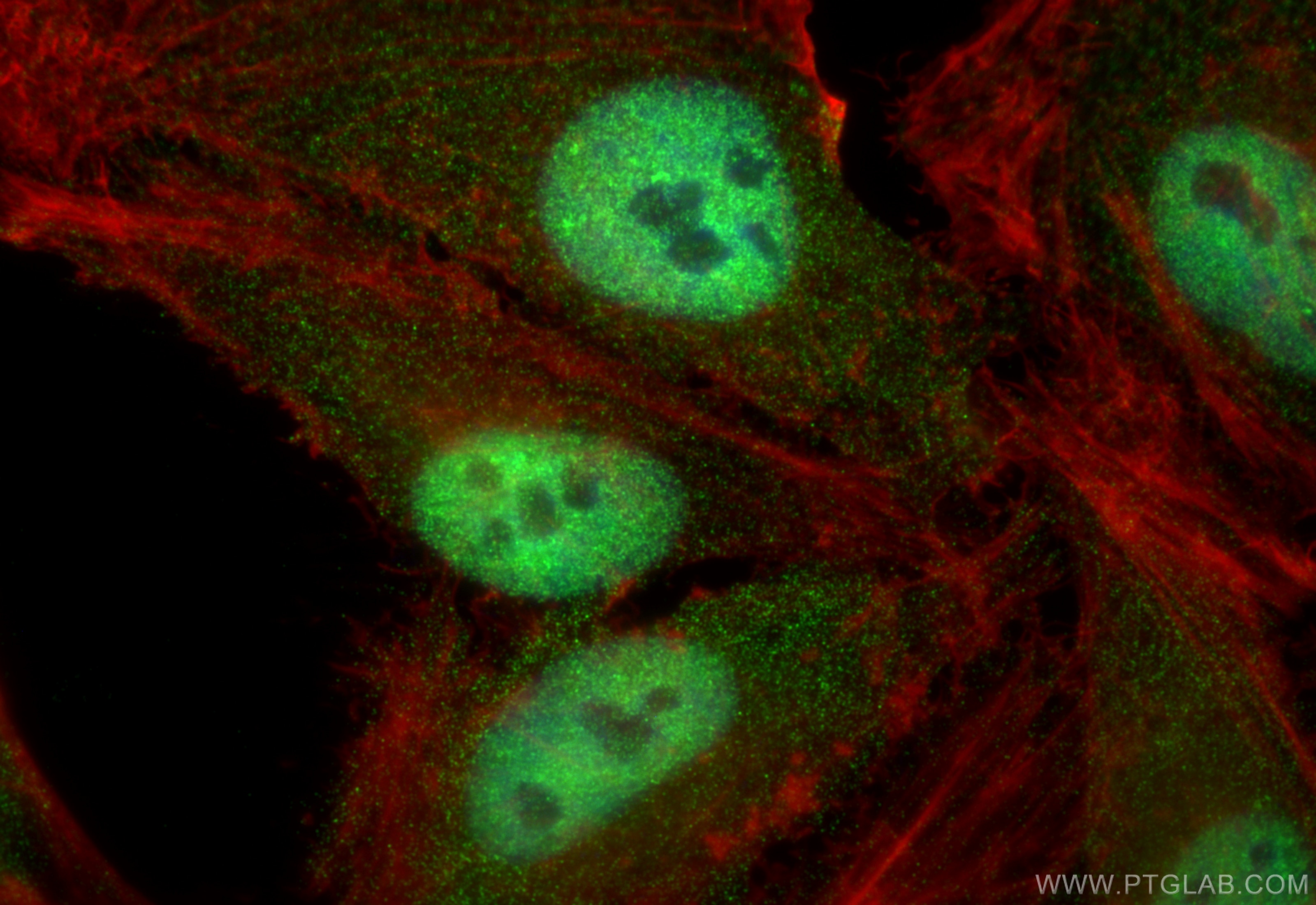- Phare
- Validé par KD/KO
Anticorps Polyclonal de lapin anti-UBE3A
UBE3A Polyclonal Antibody for WB, IHC, IF/ICC, IP, ELISA
Hôte / Isotype
Lapin / IgG
Réactivité testée
Humain, rat, souris
Applications
WB, IHC, IF/ICC, IP, ELISA
Conjugaison
Non conjugué
N° de cat : 10344-1-AP
Synonymes
Galerie de données de validation
Applications testées
| Résultats positifs en WB | cellules K-562, cellules C6, cellules Jurkat, cellules NIH/3T3, tissu cérébral de souris, tissu pulmonaire de souris |
| Résultats positifs en IP | cellules K-562, |
| Résultats positifs en IHC | tissu de cancer de la thyroïde humain, tissu hépatique de rat, tissu pulmonaire de souris, tissu rénal de souris, tissu rénal humain il est suggéré de démasquer l'antigène avec un tampon de TE buffer pH 9.0; (*) À défaut, 'le démasquage de l'antigène peut être 'effectué avec un tampon citrate pH 6,0. |
| Résultats positifs en IF/ICC | cellules HeLa, |
Dilution recommandée
| Application | Dilution |
|---|---|
| Western Blot (WB) | WB : 1:1000-1:4000 |
| Immunoprécipitation (IP) | IP : 0.5-4.0 ug for 1.0-3.0 mg of total protein lysate |
| Immunohistochimie (IHC) | IHC : 1:250-1:1000 |
| Immunofluorescence (IF)/ICC | IF/ICC : 1:300-1:1200 |
| It is recommended that this reagent should be titrated in each testing system to obtain optimal results. | |
| Sample-dependent, check data in validation data gallery | |
Applications publiées
| KD/KO | See 4 publications below |
| WB | See 12 publications below |
| IHC | See 2 publications below |
| IF | See 6 publications below |
| IP | See 4 publications below |
Informations sur le produit
10344-1-AP cible UBE3A dans les applications de WB, IHC, IF/ICC, IP, ELISA et montre une réactivité avec des échantillons Humain, rat, souris
| Réactivité | Humain, rat, souris |
| Réactivité citée | Humain, souris |
| Hôte / Isotype | Lapin / IgG |
| Clonalité | Polyclonal |
| Type | Anticorps |
| Immunogène | UBE3A Protéine recombinante Ag0346 |
| Nom complet | ubiquitin protein ligase E3A |
| Masse moléculaire calculée | 852 aa, 98 kDa |
| Poids moléculaire observé | 100 kDa |
| Numéro d’acquisition GenBank | BC002582 |
| Symbole du gène | UBE3A |
| Identification du gène (NCBI) | 7337 |
| Conjugaison | Non conjugué |
| Forme | Liquide |
| Méthode de purification | Purification par affinité contre l'antigène |
| Tampon de stockage | PBS with 0.02% sodium azide and 50% glycerol |
| Conditions de stockage | Stocker à -20°C. Stable pendant un an après l'expédition. L'aliquotage n'est pas nécessaire pour le stockage à -20oC Les 20ul contiennent 0,1% de BSA. |
Informations générales
UBE3A(Ubiquitin-protein ligase E3A) is also named as E6AP, EPVE6AP, HPVE6A and belongs to the E3 ubiquitin protein ligase family. It functions as both an E3 ligase in the ubiquitin proteasome pathway and as a transcriptional coactivator. It is also initially identified as a cellular protein that mediates in vitro association of the human papillomavirus E6 protein with p53, leading to the ubiquitin-dependent degradation of p53(PMID:1661671). Defects in UBE3A are a cause of Angelman syndrome (AS)(PMID:10508479). It has 3 isoforms with MW of 97-101 kDa produced by alternative splicing.
Protocole
| Product Specific Protocols | |
|---|---|
| WB protocol for UBE3A antibody 10344-1-AP | Download protocol |
| IHC protocol for UBE3A antibody 10344-1-AP | Download protocol |
| IF protocol for UBE3A antibody 10344-1-AP | Download protocol |
| IP protocol for UBE3A antibody 10344-1-AP | Download protocol |
| Standard Protocols | |
|---|---|
| Click here to view our Standard Protocols |
Publications
| Species | Application | Title |
|---|---|---|
J Mol Cell Biol Landscape of genomic imprinting and its functions in the mouse mammary gland. | ||
Oncogene Celastrol recruits UBE3A to recognize and degrade the DNA binding domain of steroid receptors
| ||
Cell Death Discov SNORD6 promotes cervical cancer progression by accelerating E6-mediated p53 degradation | ||
Int J Biol Sci UBE3A activates the NOTCH pathway and promotes esophageal cancer progression by degradation of ZNF185.
| ||
Mol Neurobiol All-Trans Retinoic Acid Exerts Neuroprotective Effects in Amyotrophic Lateral Sclerosis-Like Tg (SOD1*G93A)1Gur Mice. |
